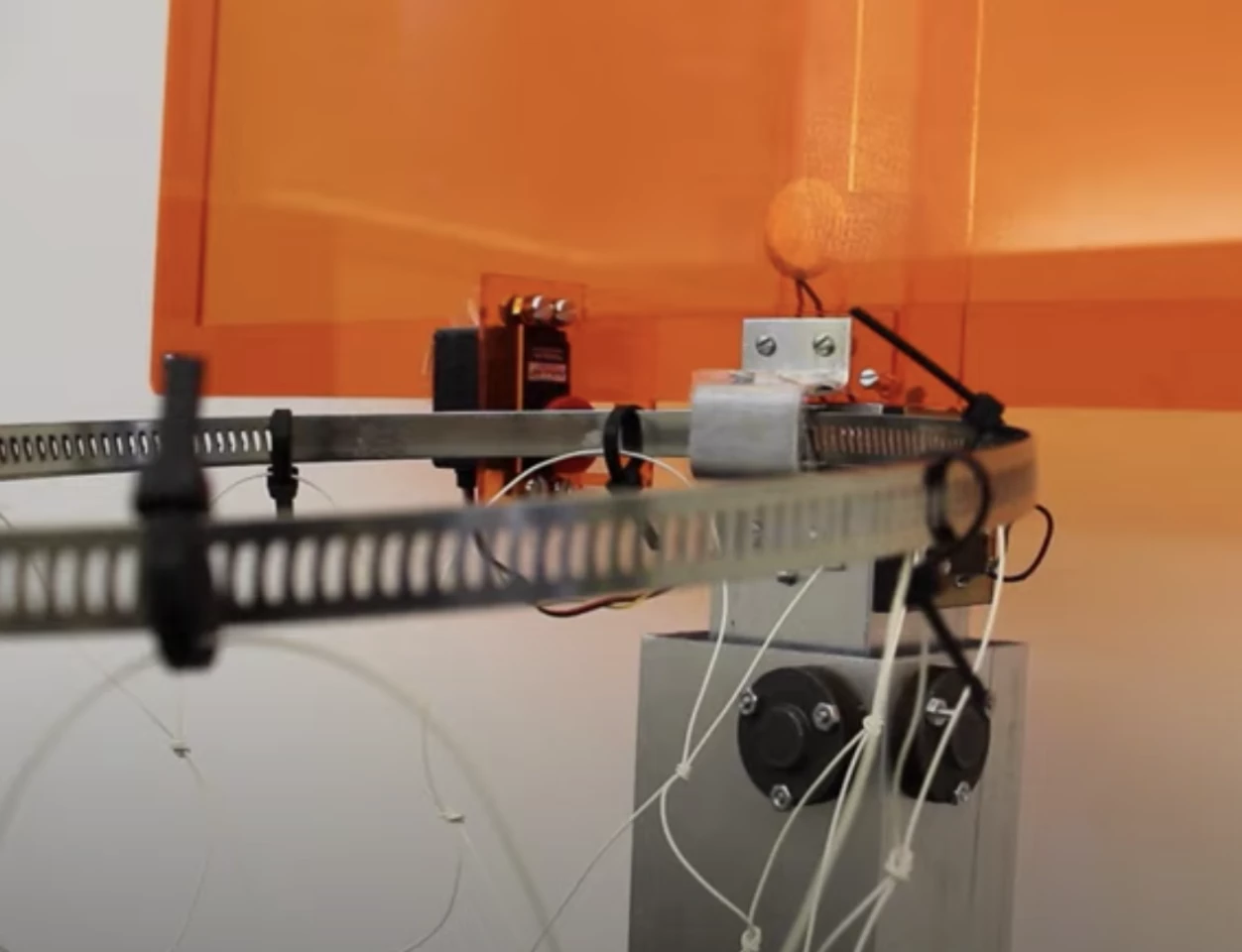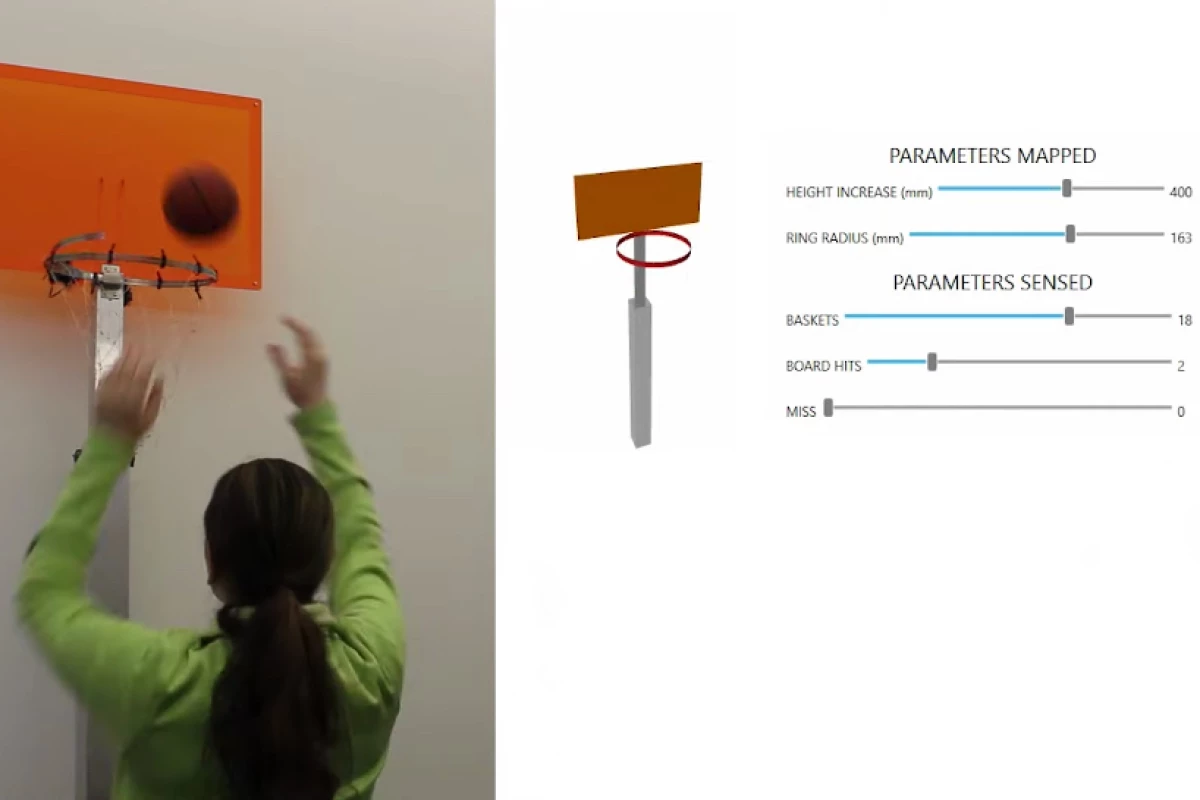When training for any sort of physical task, it's important to keep challenging yourself as your skills improve. That's the thinking behind a new adaptive basketball hoop, that gets higher and smaller as users make more shots.
The device was created by a team led by Prof. Stefanie Mueller, at MIT's Computer Science and Artificial Intelligence Lab (CSAIL). It's part of a larger project aimed at developing shape-shifting tools that adapt to help better their users' performance. Other examples include a bicycle with retractable training wheels, and an armband that changes form to help golfers keep their arms straight.
In its current incarnation, the basketball hoop incorporates a piezoelectric pressure sensor in its backboard, and an electrical switch in the hoop itself – these respectively detect every instance in which the ball hits the backboard, or passes through the hoop net. On a linked computer, users are rewarded half a point each time the ball does the former, and a full point each time it does the latter.
Once the user's average score has reached at least 0.75 points within four shots, the motorized hose-clamp-like hoop gets a little smaller in diameter, and is raised a little higher off the ground. This process is repeated over and over, with the hoop getting progressively smaller and higher as the user gets better at sinking baskets.

The setup can also be used in a non-moving static mode, or a manual mode in which users decide for themselves when to raise and shrink the basket. In lab tests, however, it was found that volunteers experienced more of a boost in performance when using the hoop in its default auto-adaptive setting.
This finding reportedly suggests that people generally aren't that good at assessing their current skill level, and tend to under- or over-challenge themselves. By contrast, the auto-adaptive technology is intended to maintain an "optimal challenge point," at which the task is neither too easy nor too difficult.
It is hoped that once developed further, the hoop and similar devices could be used by people who can't afford professional coaches. By adding more sensors (including cameras), the system could reportedly track and adapt to a wider range of skills, besides simply assessing the user's ability to get the ball through the basket.
The adaptive basketball hoop can be seen in use, in the following video.
Source: MIT





